Why Back to the Future remains the greatest movie of all time
Thirty years after the final instalment, Back to the Future remains the greatest movie of all time.
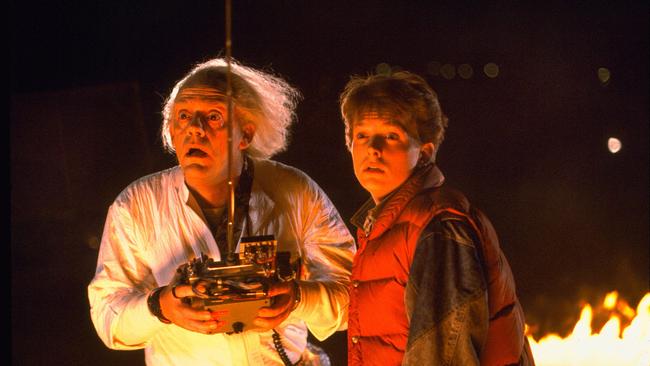
When Back to the Future Part III opened in cinemas 30 years ago, it brought to a close the adventures of time-travelling duo Marty McFly (Michael J. Fox) and Dr Emmett Brown (Christopher Lloyd). Their journeys to the past and the future disrupted the space-time continuum and threatened to erase their existence and destroy the universe. Great Scott! Sounds pretty heavy.
Bob Gale co-wrote Back to the Future (1985) with director Robert Zemeckis — which earned them an Academy award nomination — and scripted the two sequels released in 1989 and 1990. Gale co-produced all three movies. And he remains the gatekeeper for the franchise.
“It’s every filmmaker’s dream to do something that resonates so incredibly well that people still want to talk about it many years later,” Gale told Review.
“I’m grateful every day that it still generates the kind of interest that it does. I’m always happy to talk to people about it, and I hope that our enthusiasm for it will keep new generations interested in it.”
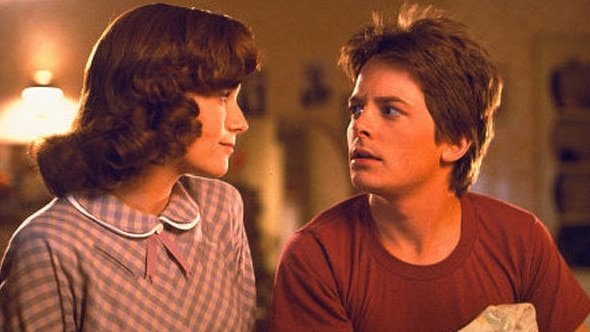
Back to the Future is a movie classic. The three films grossed almost $US1bn worldwide. Part I was added to the Library of Congress’s film registry. It is always on television, and the story and characters are fixed in popular culture. Alan Silvestri’s elevated score is instantly recognisable — as is Huey Lewis and the News’s No 1 hit theme song, The Power of Love. The trilogy fires the imagination about the past (1955 and 1885), contemplates an alternative dystopian present (1985) and ponders the future (2015). It also immortalised the DeLorean DMC-12. “If you’re gonna build a time machine into a car, why not do it with some style?” Doc says. It appealed to skateboarding, guitar-playing, lovesick teenagers everywhere. And it made every kid want to own a self-drying jacket, a hoverboard and a pair of Nike shoes with power laces.
Everyone knows that when the DeLorean hits 88 miles per hour, the plutonium sparks the flux capacitor and “you are going to see some serious shit”. Without plutonium, only a bolt of lightning generates the 1.21 gigawatts necessary to send the time machine back to the future. But the problem is you never know “when or where a bolt of lightning is going to strike”. Or do you?
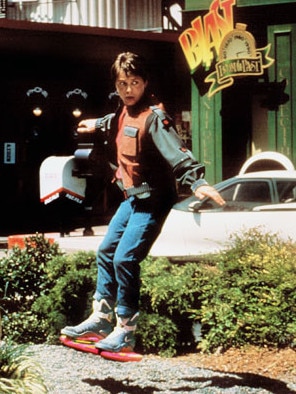
The essence of the movie is the ripple effects of time travel. Marty accidentally travels in Doc’s time machine to Hill Valley 1955. He meets his parents — George McFly (Crispin Glover; Jeffrey Weissman) and Lorraine Baines (Lea Thompson), and school bully Biff Tannen (Thomas F. Wilson). Marty enlists 1955 Doc to help him get back to the future. But things have already gone perilously wrong: his father may not end up marrying his mother, which would jeopardise his existence.
Gale says the secret to the success of the movies is that it is a story which transcends generations and appeals to all cultures. Everybody wonders what their parents were like as teenagers and what it would be like to meet them. “So, we answer that question in a wonderful larger than life comedic way that everybody can relate to,” he says.
When Gale found his father’s high school yearbook, it gave him the idea for Back to the Future. But he says his father was “nothing like” George McFly. Gale and Zemeckis were influenced by the 1960 movie The Time Machine, based on HG Wells’s novella (the clocks in the opening scene of Back to the Future are a tribute), and the TV show The Twilight Zone (1959-64). They also loved the science-fiction novels of Ray Bradbury and Robert Silverberg.
The other critical factor in making the movie a hit was casting Fox. “We shot five weeks with Eric Stoltz as Marty McFly,” Gale recalls. “If we had to finish the movie with Eric Stoltz as Marty McFly, you and I would not be having this conversation today.” Stoltz struggled with the comic timing and was fired. Fox had to juggle filming Family Ties (1982-89) during the day and reshooting Back to the Future at night and on weekends. Legend has it there are still scenes with Stoltz (out of shot) in the final film.
The first film, a creative mix of adventure, comedy and science fiction, was rejected by more than 40 studios. The idea of an eccentric older scientist and a high school teenager spending time together and a mother with a crush on her own son is a bit strange, yet audiences accepted the innocence of it. The screenplay is highly original, cleverly layered and pulsates with adrenalin-pumping excitement, raw emotion and laugh-out-loud comedy. Seemingly minor details often pay off with greater significance later. Yet the script went through many iterations (the time machine was originally a refrigerator and Doc had a pet monkey named Shemp). Studio boss Sid Sheinberg wanted it titled Spaceman From Pluto. Steven Spielberg, executive producer, replied in a memo saying he appreciated the joke and they heard nothing more of it.
There was never a plan for a sequel. Gale says if there was, he would not have put Marty’s girlfriend, Jennifer Parker (Claudia Wells; Elisabeth Shue), in the DeLorean as it lifts off the road to go back to the future at the end of Part I. But the studio demanded it. Gale initially had Marty and the Doc travelling to 1967. But it was decided to split the sequel into two movies, focused on the future (2015) and the past (1885), and they were filmed back-to-back across 11 months.
Much of what they predicted in 2015 would come true: videoconferencing, thumb-print technology, voice recognition, picture-in-picture TV and Google glasses. But no hoverboards or flying cars. And fax machines were long gone. In Part II, old Biff steals the time machine and travels to 1955 to give his younger self an almanac of major sporting results. Biff becomes a rich, vain, bullying casino operator (partly based on Donald Trump). This creates an alternative 1985 that needs to be corrected with more time travel. It is a complex and thrilling story that revisits the original movie from multiple perspectives.
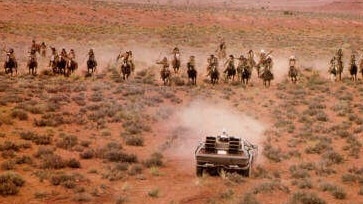
Part III, which opened in the US on May 25, 1990, is a tribute to the classic western. It was shot on location in Monument Valley and Sonora. Gale, who loved TV westerns from the 1950s and 60s, argues it is underrated. He is right. How could anyone not like cowboys and Indians, steam trains and stagecoaches, gun fights and saloons? It is now being reassessed. “Kids today absolutely love Part III because they’ve never seen a western before,” Gale says.
Doc was accidentally transported to 1885 when the DeLorean was struck by lightning. After Marty learns that Doc has been killed by Buford “Mad Dog” Tannen, he vows to change history and bring him back to 1985. The final film sees Doc fall in love with schoolteacher Clara Clayton (Mary Steenburgen) and Marty learns to tame his temper.
Ronald Reagan politely declined the invitation to play the mayor. He loved Back to the Future. He roared with laughter when Marty told 1955 Doc who was president in 1985. “The actor?” Doc replied. “Who’s vice-president? Jerry Lewis? I suppose Jane Wyman is the first lady?” In his 1986 State of the Union address, Reagan borrowed a line from Doc at the end of Part I, saying: “Where we’re going, we don’t need roads.”
While Back to the Future has a loyal fan base and legions of new admirers with every subsequent generation, there will not be a remake or further sequels. “This is a good complete story,” Gale says. “We don’t have to pick up every dollar off the table. We are not going to do a Part IV.”
There are, however, regular fan events. Documentaries, books, toys, games and collectibles keep rolling out. The adventures continued in an animated series (1991-93) and comic books still chronicle new adventures. The adult animated series Rick and Morty (2013–) is a homage to the movies. Actor Josh Gad recently reunited the cast and crew via Zoom. And the all-singing, all-dancing Back to the Future: The Musical is expected to reopen in Manchester in August.
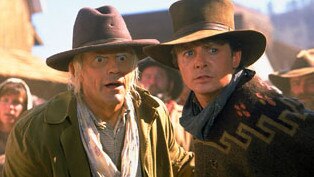
Gale permits me to sentimentalise about seeing the movies for the first time and many times since. I’ve done Back to the Future: The Ride and the Backlot Tour at Universal Studios to see the town square and clock tower. I have T-shirts, hats, a replica hoverboard, model DeLoreans, action figures and books. I even have a screen-used “Save the Clock Tower” flyer. And I’ve corralled my kids, Madison and Angus, into being photographed at the McFly house in Arleta. As the interview wraps up, Gale reveals that he plans to bring the musical to Australia. “It’s a retelling of the first movie,” he says. “It’s amazing. It really has exceeded my expectations.” Gale promises to be here for the opening (he has always wanted to visit Australia) and hopes we can meet in person. As Doc Brown says, your future is whatever you make it.
The Back to the Future trilogy is available on YouTube, Google Play and Foxtel Go.
READ MORE: The Panics’ Jae Laffer on the craft of daydreaming | MasterChef’s masterstroke






To join the conversation, please log in. Don't have an account? Register
Join the conversation, you are commenting as Logout